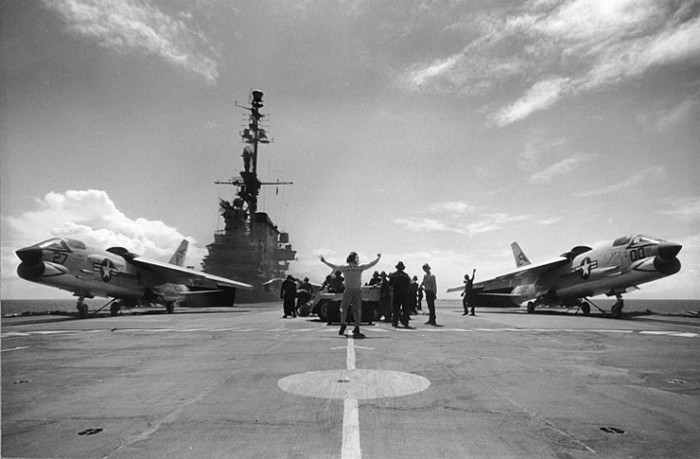
“The blast, which would have been visible on Earth, was intended to demonstrate to both friends and foe alike the west’s military and technological sophistication.”
THE APOLLO PROGRAM is rightly heralded as one of the most remarkable accomplishments of humankind. Although few would likely say the same of an earlier American lunar space program: Project A119.
Hatched in 1958 by the United States Force, the scheme involved detonating a massive H-bomb on the surface of the moon.
The blast, which would have been visible on Earth, was intended to demonstrate to both friends and foe alike the west’s military and technological sophistication.
In reality, Project A119 (as it was known within the USAF) was Washington’s response to the Soviet’s apparent leg up in the space race demonstrated by the successful launch of Sputnik 1 the previous year.
Unfortunately for the U.S., Project A119 was beset by technical problems from the get go. Perhaps the greatest hurdle was the then herculean challenge of creating a rocket large enough to deliver a massive hydrogen bomb nearly 400,000 miles to the lunar surface.
Alternate plans were drawn up to detonate a much smaller 1.7-kiloton bomb instead. Although a tenth of the size of Hiroshima blast, the reduced detonation was still expected to create a flash and dust cloud that would be observable on Earth.
Researchers at the Illinois Institute of Technology, including a young graduate student by the name of Carl Sagan studied how such an explosion would unfold in low gravity. The team concluded that the sun’s rays would illuminate the massive dust plume, particularly if the weapon was deposited along the lunar terminator — the thin line along the face of the moon that separates the dark side form the light.
Fortunately cooler heads in Washington ultimately thought better of the idea and Project A119 was scrapped in January 1959. In addition to the price tag, defence planners grew wary of the scheme after contemplating the reaction of world opinion following such a bold move. Additionally, scientists close to the project convinced the Air Force that a nuclear blast might contaminate the moon’s surface making any future manned exploration hazardous.
Although cancelled, the plan was withheld from the public until the mid-1990s when Sagan’s biographer, Keay Davidson, unearthed details while pouring over some of the late astronomer’s papers.
It was also later discovered that the Soviets were working on their own program to explode a nuclear weapon on the moon’s surface during the same period.
The Russian scheme, dubbed the E Project, would have seen a series of unmanned missions to the moon that would orbit and photograph the lunar surface. The fourth and final E mission would involve the detonation of an atom bomb.
The Soviets scuttled the plan for similar reasons: technical considerations and concerns over the political fallout of such a brazen act.
A joint U.S. and Soviet test ban treaty in 1967 saw both Moscow and Washington renounce all plans for future detonations of nuclear weapons in the upper atmosphere and outer space.
(Originally published on Nov. 27, 2012)










wasn’t detonating a-bombs and h-bombs in their own deserts and islands enough for the super-powers and allies? now they had to go into space? silly, silly people!